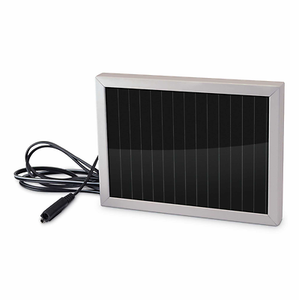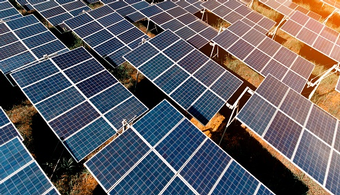Solar panels absorb solar energy and convert it into heat. As the main part of a solar thermal system, they produce heat for hot water production and heating support in the home. Read more about the structure and function of solar collectors here for the Solar Panels Claims and get tips for the purchase.
Structure and function of solar panels

Solar collectors also called solar collectors or thermal solar collectors, represent the main component of a solar thermal system. In contrast to solar modules, which convert solar energy into electricity, the collectors produce heat or thermal energy, which can be used in domestic hot water production and heating. Thus, up to 40% of the heating and up to 70% of the domestic hot water can be supplied by solar energy. Furthermore, solar collectors are used to heating swimming pools, in solar thermal power plants for power generation and the production of process energy in the industrial sector.
This is how a solar collector is constructed: Graphical representation of the functioning of solar panels
Inside the collector is the absorber, which absorbs solar radiation, heats up and transfers heat to a heat transfer medium. The heat carrier is a liquid, which usually consists of water and propylene glycol – one speaks of the solar fluid. Propylene glycol is designed to prevent the water from freezing in winter and getting too hot in summer. Via pipes, the heated liquid is transported by the pump through the absorber and then into the solar storage tank. This supplies the household with warm water.
So that the collector is protected from heat loss to the outside, the absorber is insulated laterally and below. Only in low-temperature collectors for swimming pool heating is dispensed with insulation. Against the weather and mechanical stress such as snow, hail or wind protect the housing of the collector and a transparent glass cover. The latter also prevents the heat extraction of the absorber by cold wind but also the heat radiation from the absorber.
Flat-plate collectors:
Flat plate collectors’ work according to the principle described above. The absorber is a black coated sheet of copper or aluminum. On its underside, the pipes for the transport of the heat-conducting solar fluid are attached. The thermal insulation at the rear and the side walls of the absorber are usually made of polyurethane foam, mineral wool or foam glass. The glass cover is usually a low-iron solar safety glass. Flat collectors are among the most widespread collectors in Germany, as they are relatively inexpensive to purchase with a collector area of $ 300 to $ 400 / m². Their disadvantage: Due to the mediocre insulation, they are neither suitable for very high water temperatures required nor for low outside temperatures – in both cases the heat loss is high.
Vacuum tube collector:
This collector shape has more complex insulation: Here, the absorber surface is installed in evacuated (vacuum-pumped) glass tubes. Metal reflectors surround these vacuum tubes to direct sunlight into the tubes and heat the absorber. The heat of the absorber is conducted via a heat transfer medium via the tubes to a collector pipe on the frame of the collector. This is connected to the collector circuit.

